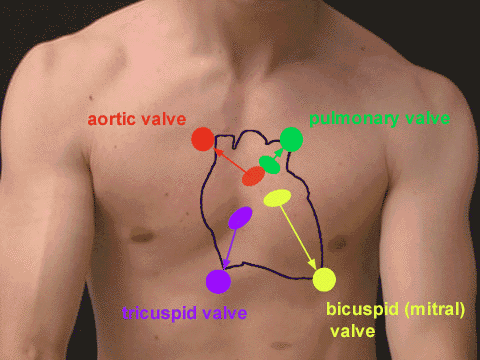FIGURE 2 THIS FIGURE DEPICTS THE PERCENTAGE OF FIRMS
1 GENERAL INFORMATION FIGURE 11 MAP OF RIVER1 PREDICTIVE ANALYSIS OF INTERVAL CHOLECYSTECTOMY FIGURE 1
1 QUALITY ASSESSMENT FIGURE S1 RISK OF BIAS ASSESSMENT
11 SUPPLEMENTAL FIGURES SF1 SAMPLES CLUSTER BY STRAIN PLOT
12 •• WHICH OF THE POSITIONVERSUSTIME CURVES IN FIGURE
3 SUPPLEMENTARY FIGURES 画布 196 FIGURE S1 PHYLOGENETIC PROFILES
Figure 2
Figure 2
This figure depicts the percentage of firms in each cohort surviving to a particular cohort year. A cohort comprises all firms producing in a given year. This includes firms that have just begun producing and firms that have produced in the past and continue to produce. A cohort year is the number of years that have passed since the cohort began; i.e. the year of the cohort is cohort year zero. For example, 35% of the 1967 Cohort survived in cohort year 10; this means that of all the firms producing in 1967, 35% continued to produce 10 years later (in 1977).
The figure was constructed using survey size data in Table 1 and cohort cumulative exit rate data from Table 8 in Dunne, Roberts, and Samuelson (1988).
Figure 4
This figure depicts the market share of each cohort of firms by cohort year. A cohort comprises all firms producing in a given year, including firms that have just begun producing and firms that have produced in the past and continue to produce. A cohort year is the number of years that have passed since the cohort began; i.e. the year of the cohort is cohort year zero. For example, the 1967 Cohort has a market share of 0.72 in cohort year 10; this means that firms that were producing in 1967 comprise 72% of the market 10 years later (in 1977).
The figure was constructed by using market share data from Table 8 in Dunne, Roberts, and Samuelson (1988) and adding together existing firms and entry cohorts to create cohorts.
Figure 6
This figure depicts the average size of cohort survivors relative to all census firms by cohort year. A cohort comprises all firms producing in a given year, including firms that have just begun producing and firms that have produced in the past and continue to produce. A cohort year is the number of years that have passed since the cohort began; i.e. the year of the cohort is cohort year zero. For example, the 1967 Cohort had average sales relative to all census firms of 2.41 in cohort year 10; this means that in 1977, the average sales of firms producing in 1967 that were still producing in 1977 was 2.41 times larger than the average firm producing in 1977.
The figure was constructed using average size of surviving firms relative to all firms in the industry data from Table 8 in Dunne, Roberts, and Samuelson. Cohorts were constructed by using cumulative exit rates in Table 8 and census sample sizes in Table 1 to calculate the number of surviving firms by entrance year.
Figure 7
This figure depicts the average size of new entrant cohorts relative to all census firms by cohort year. A new entrant cohort comprises all firms that have entered the industry after a given year. A cohort year is the number of years that have passed since the cohort began; i.e. the year of the cohort is cohort year zero. For example, the 1967 new entrant cohort had average sales relative to all census firms of 0.41 in cohort year 10; this means that in 1977, the average sales of all firms that had entered the industry after 1967 was 0.41 times the size of the sales of the average firm producing in 1977.
The figure was constructed using average size of surviving firms relative to all firms in the industry data from Table 8 in Dunne, Roberts, and Samuelson. New entrant cohorts were constructed by using cumulative exit rates in Table 8 and census sample sizes in Table 1 to calculate the number of surviving firms by entrance year.
4 CROSSWALK FRICTION TESTS (ATTACHMENT) FIGURE 1 AN INTERSECTION
7 BILDER OG UTKIPPSFIGURER I PRIMÆR 3 –
AIR CARGO FIGURES FOR THE MAIN UK FREIGHT AIRPORTS
Tags: figure 2, the figure, figure, depicts, percentage, firms
- CONCELLO DE RIBADEO F011 ED 1 ENQUISA
- INHABILIDAD EN ELECCION DE PERSONERO POR PARENTESCO – CRITERIO
- INSTYTUT PSYCHOLOGII UNIWERSYTET KAZIMIERZA WIELKIEGO ZGŁOSZENIE ZAJĘĆ 20182019
- PILCHOWICE DN IMIĘ I NAZWISKO WÓJT GMINY
- INFORME SOBRE ELS RESULTATS DE LA CONSULTA PÚBLICA SOBRE
- GLOSARIO DE KANT ACCIÓN (CONTRARIA CONFORME Y POR DEBER)
- YEMEK KARIŞTIRICISI BU BULUŞ YEMEKLERI PIŞERKEN KULLANICININ YARDIMI
- SMEPROMOTION IN GERMANY AN OVERVIEW (DRAFT) BETTINA FÜHRMANN
- CALENDARIO ECOFISIOLOGÍA SEMESTRE 20092 RESPONSABLES SESIÓN TEMAS Y ACTIVIDADES
- (PIECZĘĆ SZKOŁY) REJESTR ZAJĘĆ OBSERWOWANYCH IMIĘ I
- SPRÁVA O ČINNOSTI KOMISIE MLÁDEŽE JAMES ZA ROK 2015
- PREPARATION OF PAPERS FOR THE IEEE ICOPSBEAMS 2014 CONFERENCE
- ADULT COMMUNITY AND FURTHER EDUCATION BOARD ANNUAL REPORT 2008
- CURRICULUM VITAE DE LOS ARTISTAS LUIS CARLON LOPEZ EXPERIENCIA
- ADULT INFORMATION SERVICES MANAGER TITLE ADULT INFORMATION SERVICES MANAGER
- CONTRATO DE MUTUO CON INTERÉS Y GARANTÍA HIPOTECARIA CONTRATO
- PHILIPP WEISS LISTNA LJUBEZEN PIŠEM Z LEVICO IN ČRTAM
- MANAGER MANAGE POST PRELIMINARY PROCESSING WORK INSTRUCTION PURPOSE THE
- 8 HIGHSENSITIVITY NO2 SENSOR BASED ON NTYPE INP EPITAXIAL
- KAMU HİZMET STANDARTLARI TABLOSU İMAR MÜDÜRLÜĞÜ YAPI KULLANMA VE
- AQ ××××—200× 目录 ICS D 备案号: 中华人民共和国安全生产行业标准 AQ
- 15A NCAC 02C 0117 DESIGNATED AREAS WATER SUPPLY WELLS
- ◄ JULY ~ AUGUST 2017 ~ SEPTEMBER ► SUN
- CONTENT MANAGEMENT INTEROPERABILITY SERVICES (CMIS) VERSION 10 OASIS STANDARD
- {YOUR LETTERHEADLOGO ETC HERE} GUIDANCE DOCUMENT FOR COMPLETING THE
- NOMBRE………………………………………………………………………………1º ESO 1 CONTESTA A LAS PREGUNTAS TOCA LA
- SVEUČILIŠTE JOSIPA JURJA STROSSMAYERA U OSIJEKU EKONOMSKI
- EXCELENTÍSSIMO(A) SENHOR(A) JUIZ(A) FEDERAL DA SUBSEÇÃO JUDICIÁRIA DE FEIRA
- THE ROYAL VETERINARY COLLEGE ANNUAL APPRAISAL OF POSTGRADUATE RESEARCH
- ESCOLA GORNAL 2017 NOM JEROGLÍFICS COM ESTÀ EL POT?
 ACC ACTIVITATS ACCELERADORS DE PARTÍCULES ACTIVITAT 9 DETERMINACIÓ
ACC ACTIVITATS ACCELERADORS DE PARTÍCULES ACTIVITAT 9 DETERMINACIÓ38 DE NEDERLANDSE REPUBLIEK SPINOZA EN DE RADICALE VERLICHTING
10 SYLVIE COURTINEDENAMY ENTRE DEUX LANGUES LANGUE ET AFFECT
 5 THE GREAT DIVORCE (1946) AND THE ESCHATOLOGY OF
5 THE GREAT DIVORCE (1946) AND THE ESCHATOLOGY OF CONVENIO DE COLABORACIÓN ENTRE LA UNIVERSITAT POLITÈCNICA DE VALÈNCIA
CONVENIO DE COLABORACIÓN ENTRE LA UNIVERSITAT POLITÈCNICA DE VALÈNCIARITOS DE JAIMA LIMAM BOISHA PRESENTACIÓN FERNANDO LLORENTE MUCHAS
WNIOSEK O WYDANIE ZAŚWIADCZENIA Z AKT EWIDENCJI LUDNOŚCI
LA REPÚBLICA ARGENTINA NO HA EFECTUADO RECORTES PRESUPUESTARIOS EN
 ÜSKÜDAR İSTİKLAL MAHALLESİ (MUSTAFA KEMAL MAHALLESİ) 11000 ÖLÇEKLİ ISLAH
ÜSKÜDAR İSTİKLAL MAHALLESİ (MUSTAFA KEMAL MAHALLESİ) 11000 ÖLÇEKLİ ISLAH FCC SİRKÜLER RAPOR 02244435538 02244435539 ÜÇEVLER
FCC SİRKÜLER RAPOR 02244435538 02244435539 ÜÇEVLERCIRCULAR LETTER UR 206 13 NOVEMBER 2006 RE EXTENSION
 R EGION IV DIVISION II MEN’S BASKETBALL (DISTRICT
R EGION IV DIVISION II MEN’S BASKETBALL (DISTRICT REGIÓN DE MURCIA CONSEJERÍA DE EDUCACIÓN Y CULTURA
REGIÓN DE MURCIA CONSEJERÍA DE EDUCACIÓN Y CULTURASEMÁNTICA PARA EL CÁLCULO DE PREDICADOS SIGNIFICADO DE
 POESÍA ME APRENDO LA POESÍA Y HAGO UN DIBUJO
POESÍA ME APRENDO LA POESÍA Y HAGO UN DIBUJODIE SCHÖNSTE ALLER FRAUEN DRAUSSEN DÄMMERT ES ZUR NACHT
 HUMAN CARDIOVASCULAR PHYSIOLOGY BACKGROUND – IN A HEALTHY HEART
HUMAN CARDIOVASCULAR PHYSIOLOGY BACKGROUND – IN A HEALTHY HEART LIETUVOS MUZIEJŲ ASOCIACIJOS PROJEKTO „MUZIEJUS – MOKYKLA – MOKSLEIVIS
LIETUVOS MUZIEJŲ ASOCIACIJOS PROJEKTO „MUZIEJUS – MOKYKLA – MOKSLEIVISPUERTO VIEJO QUEMADO RANGER DISTRICT 2013 ANNUAL OPERATING INSTRUCTIONS
 ASSESSORIA DE COMUNICAÇÃO MÚSICA CANTOR JAMAICANO ENCERRA PROJETO REGADO
ASSESSORIA DE COMUNICAÇÃO MÚSICA CANTOR JAMAICANO ENCERRA PROJETO REGADO